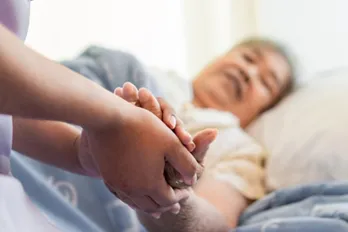Immobility of any form can produce many complications and challenges. The challenges, as well as the outcome, can be severe to a loved one’s weakened body. It is necessary to know the reason the person is bedridden. Knowing the illnesses or chronic conditions of your loved one is vital information to have in your tool chest. For someone who is unable to get out of bed due to a chronic or debilitating illness, without proper care, the condition can decline rapidly. Rarely does being bedridden cause loss of life, but if the lack of understanding about how to protect a bedbound loved one, complications from inadequate care can lead to many problems, including death.
Immobility of the body may lead to pressure ulcers, skin problems, abnormalities in fingers and toes, joint pain, loss of muscle mass, and loss of bone mass. Circulation issues like deep vein thrombosis and pulmonary embolism, and atelectasis(when the alveoli…. small bubbles in the bottom of the lungs don’t fill with air) can create breathing difficulties and pneumonia.
Loved ones who are no longer able to get out of bed require special care needs. A head-to-toe assessment is essential daily. Ensuring a comfortable position must be head of mine as a caregiver. If you have a hospital bed, ensure the mattress is of good quality. Having a too-soft mattress causes discomfort like stiffness and sore backs have been reported. A too-hard mattress is not a good product either. Shoulders, spine, and hips can be compromised because there is no give to the body curvatures. Protecting the skin from breakdown is a high priority. Bed positioning of the care recipient is important. Keeping the head of the bed elevated helps with air exchange allowing the lungs to expand. You can also use pillows to elevate the head of your loved one.
Pay Attention
Hygiene for bedridden care is vital to keeping your loved one comfortable. Nutrition is important for the bedridden. We know that proper nutrition improves the overall quality of life. Changing positions every 2–3 hours based on need is essential. Keep skin clean and dry. Using pillows to protect boney areas like elbows, hip bones, ankles, and the coccyx bone(the triangular bony structure located at the bottom of the vertebral column). It is composed of three to five bony segments held in place by joints and ligaments.
As Your Proactive Caregiver Advocate, always seek medical professionals for the best practices for moving your loved one to prevent harm or injury.
Dr. Cynthia J. Hickman is a retired registered nurse and case manager; CEO of Your Proactive Caregiver Advocate and author of From the Lens of Daughter, Nurse, and Caregiver: A Journey of Duty and Honor, and The Black Book of Important Information for Caregivers.

